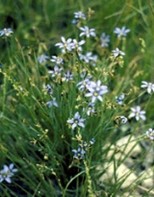Home » Collin County » Page 5
Monthly Talks The Collin County Chapter of NPSOT meets on the first Tuesday of each month at 6:30 p.m., except in December. These talks include a featured speaker discussing a
2024 Officers President – Rodney Thomas Vice-President – Jason Ney Secretary – Betsy Farris Ways and Means – Carol Clark Treasurer – John Lingenfelder Programs – Tim Castelli Committee Chairs
**ARCHIVED POST ** Viburnum rufidulum – A Tree for All Seasons Viburnum rufidulum, or commonly known as “Rusty Blackhaw Viburnum”, has an unusual name but is a native North Texas
**ARCHIVED POST ** “The garden is like a hospital: All the plants are on intensive care. Watering, mulching, fertilizing, maybe, even someone, chopping off their little dead heads. In a
**ARCHIVED POST ** 11 Fascinating Facts about Mistletoe in North Texas You cannot escape mistletoe during the holidays; it is in songs, decorations, movies, and many other forms of popular
**ARCHIVED POST ** “Winter is a Season of Recovery and Preparation” Paul Theroux Winter is upon us. This is the season to relax and reflect on how well our gardens
**ARCHIVED POST ** The end of the year is a wonderful time to join The Native Plant Society of Texas. There are 7 levels of membership to choose from, including
The Collin County Chapter depends on the active support of NPSOT members. We welcome families looking for outdoor activities, students needing volunteer hours, and anyone seeking to donate their time

Collin County and North Texas Resources Sally Wasowski’s curated listing of native plants for North Texas landscapes. Shades of Green garden center in Frisco interviews Carol Clark, past chapter president, about the Native
State Office Address:
Native Plant Society of Texas
PO Box 3017
Fredericksburg, TX 78624
Become an important part of a statewide community with over 5,000 members, who are united in our mission to promote Texas native plants!
Native Plant Society of Texas is a 501(3)(c) nonprofit organization This website and all content Copyright © Native Plant Society of Texas. All rights reserved. Content may not be reprinted in whole or in part without written permission. Contact the Webmaster.